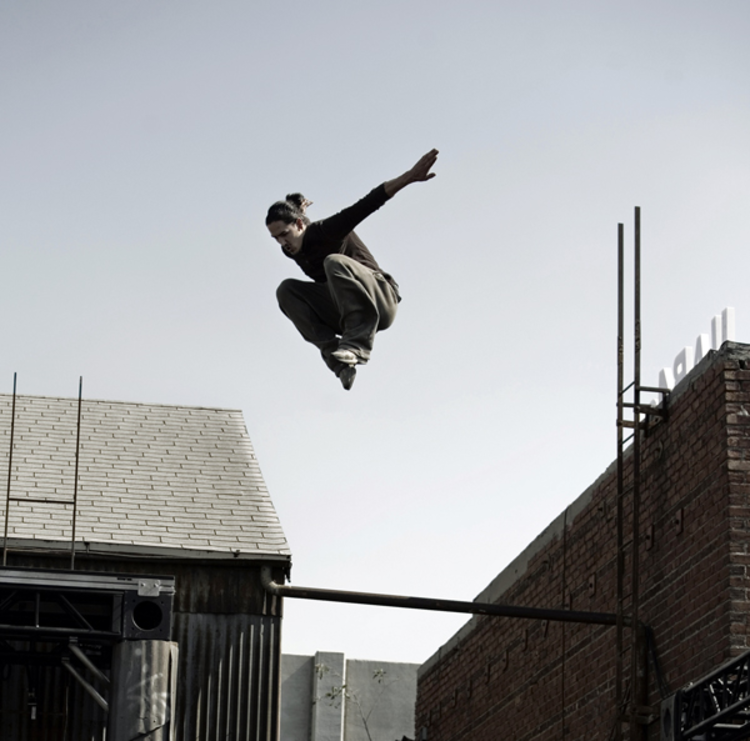
Jump starts: Parkour leaps into the mainstream consciousness
Los Angeles Times | Brand X Daily - June 03, 2010
Until fairly recently, practitioners of parkour shared the slice of sidewalk subculture generally associated with breakdancers and skaters in the late '80s. Sure, many had seen Sébastien Foucan scramble over buildings with the agility of a panther on speed in the opening sequence of “Casino Royale,” but few knew what to call what he was doing beyond, “Whoa – awesome.”
These days, you can Google “parkour” and watch videos uploaded by fanatics from all over the world. “The Prince of Persia” video game features some of the ferociously agile moves and “The Office” has even done a spoof on the sport. Catapulting the underground art even further into the mainstream consciousness is MTV's new show “Ultimate Parkour Challenge,” co-created with the recently launched World Freerunning & Parkour Federation (WFPF).
But the show has also stirred up controversy in the parkour community, a world already rife with debate over its purpose and application.
Parkour is a lot like jazz: It defies definition by its very nature, characterized by a commitment to freedom of expression and a rejection of limitations. Some traceurs, as the practitioners call themselves, agree with the movement's founder, David Belle, that efficiency trumps back flips. The WFPF finds that distinction constricting.
“The strictest definition of parkour is that it is the most efficient path from point A to B. We really like to say that parkour is the art of finding the most efficient and creative way from A to B,” says Victor Bevine, co-founder of the WFPF.
There are also some purists who contend that parkour is an art form and should never be made into a competition.
“In the extreme sports world and the martial arts world, pretty much any sport that gained a lot of recognition ended up as part of some kind of competition, and a lot of people got hurt, and the sport was diluted,” says Alex Scott, 21, a local traceur since 2004.
But the MTV athletes see things differently.
“I don't think any of us view it as a sport,” explains Daniel Arroyo, 23. “People who watch the show realize that there is no rivalry, there's just friendly motion.”
Instead of diluting parkour's philosophy, these athletes believe they're preserving it.
“We're slowly sneaking in the right messages,” says Ryan Doyle, 25.
But Cliff Kravit, founder of PKCali.com and leader of weekly parkour classes at the Los Angeles Gymnastics School, disagrees. “I'm not an advocate of the show,” Kravit says. “The MTV approach generally is one that caters to the extreme, and parkour's not about injuries or going extreme.”
One of the show's stars, Daniel Ilabaca, says he understands the concern. “That's the whole reason I'm involved. I want to be part of this battle and keep people safe,” says Ilabaca, 22. And although he agrees that MTV is motivated by profit, he acknowledges that it's “starting to see this needs to not be about competition – it needs to be more about imagination and creativity.”
Ilabaca recently produced a video called Choose Not to Fall, a breathtaking example of the poetry that can be motion. In it, he also says he almost lost his life to drugs, until parkour showed him he had the power to choose his own path.
“Parkour is a tool that can be used for so much good,” he says. “It's [important] for people to become aware of that before it gets too late and parkour becomes completely physical and becomes just competition or about making money, and the message is lost.”
--Melissa Henderson
Photo: Daniel Ilabaca takes flight between buildings at Lacey Studios in Los Angeles. He is among the parkour practitioners participating in MTV's series about the sport. Credit Ediphotoeye.
